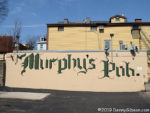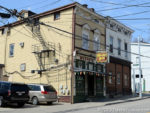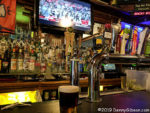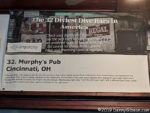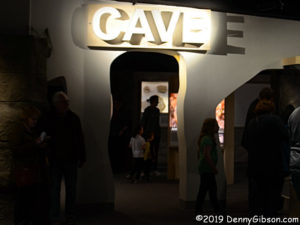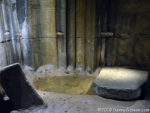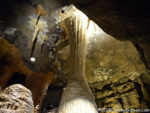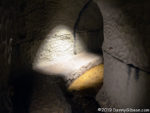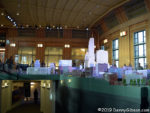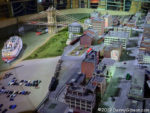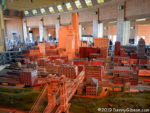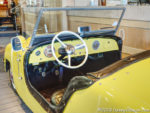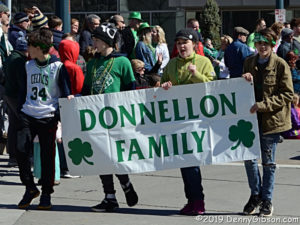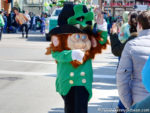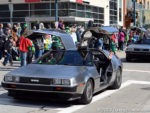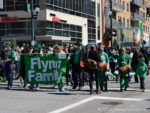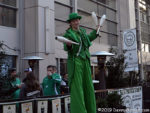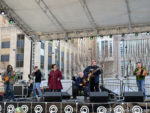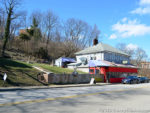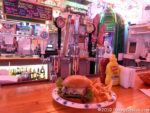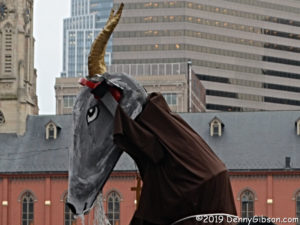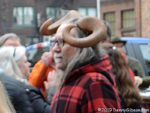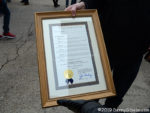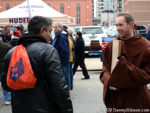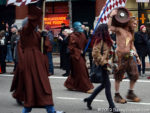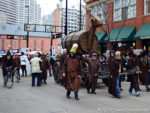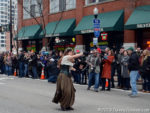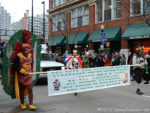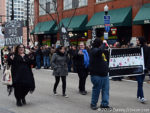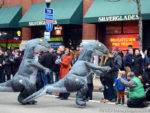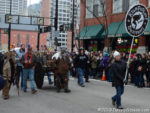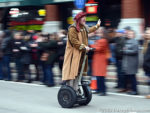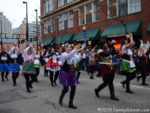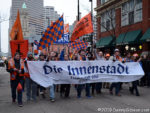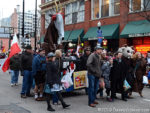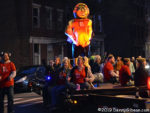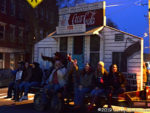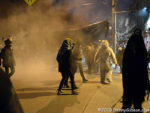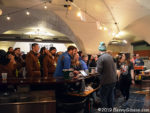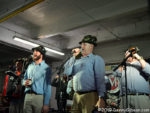 The Ludlow Garage is a sadly dim shadow in my personal reminisces. I blame that on being busy and broke. My first child was born about seven months before the Garage’s opening on September 19, 1969. Some months prior to that, my wife and I had moved from an apartment roughly half a mile from where the Ludlow Garage was about to appear to a house in a Cincinnati suburb some seven miles distant. Besides the new baby, I was working a full-time job and playing in a band which meant there was little time. A mortgage and commuting to downtown — along with that new baby — meant there was little money. I visited the Garage a few times but I missed biggies like the Allman Brothers and Pink Floyd. I almost saw Santana. A friend and I were in line when we convinced each other to go somewhere else. I may have seen Mother Earth since I distinctly recall seeing East Orange Express there and their only appearance listed on the Ludlow Garage Archive is as a Mother Earth opener. Despite thin credentials, I attended the 25th reunion in 1994 and came back for the 50th. As Ludlow Garage owner Jim Tarbell delivered some opening remarks, Rob Fetters, the day’s opener, crept up behind him following Jim’s mention of his name. This might have been a great photo if I hadn’t been so close and chopped off Jim’s head. But it’s the thought — and the spirit — that counts. Right?
The Ludlow Garage is a sadly dim shadow in my personal reminisces. I blame that on being busy and broke. My first child was born about seven months before the Garage’s opening on September 19, 1969. Some months prior to that, my wife and I had moved from an apartment roughly half a mile from where the Ludlow Garage was about to appear to a house in a Cincinnati suburb some seven miles distant. Besides the new baby, I was working a full-time job and playing in a band which meant there was little time. A mortgage and commuting to downtown — along with that new baby — meant there was little money. I visited the Garage a few times but I missed biggies like the Allman Brothers and Pink Floyd. I almost saw Santana. A friend and I were in line when we convinced each other to go somewhere else. I may have seen Mother Earth since I distinctly recall seeing East Orange Express there and their only appearance listed on the Ludlow Garage Archive is as a Mother Earth opener. Despite thin credentials, I attended the 25th reunion in 1994 and came back for the 50th. As Ludlow Garage owner Jim Tarbell delivered some opening remarks, Rob Fetters, the day’s opener, crept up behind him following Jim’s mention of his name. This might have been a great photo if I hadn’t been so close and chopped off Jim’s head. But it’s the thought — and the spirit — that counts. Right?
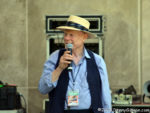
 Jim managed to finish his remarks and Rob got the show rolling. The January 1971 demise of the Ludlow Garage preceded the start of Rob’s impressive musical career so he never got to play there. In the early 1980s, he fronted local legends The Raisins. The Psychodots, The Bears (featuring Adrian Belew), and lots of solo work have followed. Using recorded tracks lifted from albums combined with live guitar and vocals, he delivered a cool retrospective.
Jim managed to finish his remarks and Rob got the show rolling. The January 1971 demise of the Ludlow Garage preceded the start of Rob’s impressive musical career so he never got to play there. In the early 1980s, he fronted local legends The Raisins. The Psychodots, The Bears (featuring Adrian Belew), and lots of solo work have followed. Using recorded tracks lifted from albums combined with live guitar and vocals, he delivered a cool retrospective.
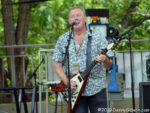
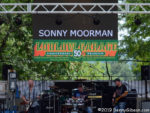 I don’t believe Sonny Moorman ever played at the Garage either, but he’s played just about everywhere else. A typical performance consists of lots of his own blues songs but one of his side projects was an outstanding Allman Brothers tribute band and he has been a super fan of Lonnie Mack since childhood. Grand Funk Railroad headlined that first Ludlow Garage with Lonnie Mack preceding them. I’ve often said that if a Lonnie Mack biopic is ever produced, it absolutely has to involve Sonny. He reinforced that today with a remarkable Lonnie Mack tribute set.
I don’t believe Sonny Moorman ever played at the Garage either, but he’s played just about everywhere else. A typical performance consists of lots of his own blues songs but one of his side projects was an outstanding Allman Brothers tribute band and he has been a super fan of Lonnie Mack since childhood. Grand Funk Railroad headlined that first Ludlow Garage with Lonnie Mack preceding them. I’ve often said that if a Lonnie Mack biopic is ever produced, it absolutely has to involve Sonny. He reinforced that today with a remarkable Lonnie Mack tribute set.
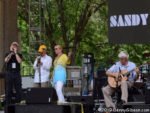
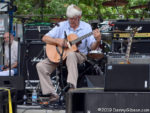 This guy definitely played the Ludlow Garage. Sandy Nassan opened the Garage’s second concert which featured Spirit. I apologize for not catching the names of the folks providing harmonica and vocals. They were quite good and certainly added to the performance but, on the other hand, they might not have really been necessary for a guy who released the critically acclaimed Just Guitar within a year of that Ludlow Garage appearance.
This guy definitely played the Ludlow Garage. Sandy Nassan opened the Garage’s second concert which featured Spirit. I apologize for not catching the names of the folks providing harmonica and vocals. They were quite good and certainly added to the performance but, on the other hand, they might not have really been necessary for a guy who released the critically acclaimed Just Guitar within a year of that Ludlow Garage appearance.

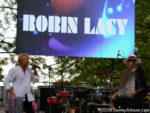
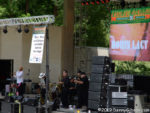 Robin Lacy & DeZydeco recently celebrated their own 30th anniversary but I missed it. In fact, it had been a while since I’d seen the band and I’d almost forgotten how much fun they are. Robin and Joani Lacy live near the Ohio River town of New Richmond where they often perform as a trio with DeZydeco guitarist Ricky Leighton. It’s a place I tend to end up in on semi-aimless drives now and then and I’ve enjoyed several summer afternoons listening to the three of them rotate song selections. As enjoyable as that is it just isn’t the same as a toe-tapping bead-tossing full-band outing. “If you ain’t having fun,” Robin’s been known to point out, “it’s your own damned fault.”
Robin Lacy & DeZydeco recently celebrated their own 30th anniversary but I missed it. In fact, it had been a while since I’d seen the band and I’d almost forgotten how much fun they are. Robin and Joani Lacy live near the Ohio River town of New Richmond where they often perform as a trio with DeZydeco guitarist Ricky Leighton. It’s a place I tend to end up in on semi-aimless drives now and then and I’ve enjoyed several summer afternoons listening to the three of them rotate song selections. As enjoyable as that is it just isn’t the same as a toe-tapping bead-tossing full-band outing. “If you ain’t having fun,” Robin’s been known to point out, “it’s your own damned fault.”
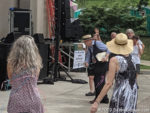
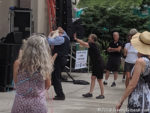
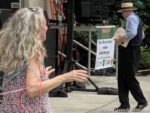 I’m pretty sure everybody did have fun and that includes Mr. Tarbell. Here we see him catching a strand of thrown beads, struggling a bit to get them over his hat, then casually tossing off a few dance moves before continuing his walk to the opposite side of the stage.
I’m pretty sure everybody did have fun and that includes Mr. Tarbell. Here we see him catching a strand of thrown beads, struggling a bit to get them over his hat, then casually tossing off a few dance moves before continuing his walk to the opposite side of the stage.
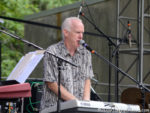
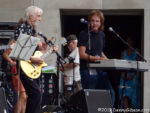
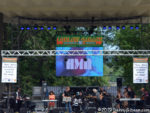 The members of Haymarket Riot nearly exceeded the space available on the stage and the name apparently did exceed the space available on the behind stage screen. That screen, by the way, showed a recorded Ludlow Garage light show in addition to each performer’s name. The band was started in 1965 by the two guys in the second picture, G. Parker and Steve Helwig. They did play at the Ludlow Garage. Over the years, quite a few members have come and gone around Parker and Helwig and one was in town to help them with a song today. Gary Griffin left Haymarket and Cincinnati in the late 1970s then spent the ’80s and ’90s recording and touring with the Beach Boys and Jan & Dean. He is currently touring with Brian Wilson but had some time off to help his former bandmates perform Good Vibrations.
The members of Haymarket Riot nearly exceeded the space available on the stage and the name apparently did exceed the space available on the behind stage screen. That screen, by the way, showed a recorded Ludlow Garage light show in addition to each performer’s name. The band was started in 1965 by the two guys in the second picture, G. Parker and Steve Helwig. They did play at the Ludlow Garage. Over the years, quite a few members have come and gone around Parker and Helwig and one was in town to help them with a song today. Gary Griffin left Haymarket and Cincinnati in the late 1970s then spent the ’80s and ’90s recording and touring with the Beach Boys and Jan & Dean. He is currently touring with Brian Wilson but had some time off to help his former bandmates perform Good Vibrations.

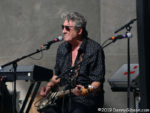 The Warsaw Falcons arrived a little too late for the Ludlow Garage. Originally forming in 1981, the band has deformed, unformed, and reformed multiple times with the only constant being guitarist David Rhodes Brown. The current three-piece lineup came together in 2014 and has continued the legacy of solid live music with a tinge of rockabilly.
The Warsaw Falcons arrived a little too late for the Ludlow Garage. Originally forming in 1981, the band has deformed, unformed, and reformed multiple times with the only constant being guitarist David Rhodes Brown. The current three-piece lineup came together in 2014 and has continued the legacy of solid live music with a tinge of rockabilly.
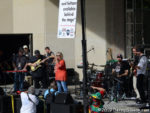
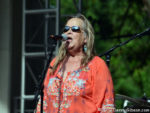 It’s possible that I saw Tracy Nelson at Ludlow Garage fronting Mother Earth. As mentioned earlier, that’s based on the fact that I recall seeing openers East Orange Express but I doubt that was the only time they played there. Today she had wonderful backing by Cincinnati’s Bluebirds. Great voice and great performance.
It’s possible that I saw Tracy Nelson at Ludlow Garage fronting Mother Earth. As mentioned earlier, that’s based on the fact that I recall seeing openers East Orange Express but I doubt that was the only time they played there. Today she had wonderful backing by Cincinnati’s Bluebirds. Great voice and great performance.

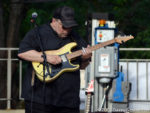 As stated, Nelson’s backing band was the Bluebirds. There were a few members I didn’t recognize but that wasn’t particularly unusual. The band has been around a long time and I’ve lost count of the various lineups I’ve seen. The schedule called for the Bluebirds to perform their own set, including an Allman Brothers tribute, following Nelson’s set. I expected Nelson to just walk off and the band stay in place. Instead, a full onstage shuffle commenced and when it ended a more familiar lineup was on stage. Both groups were, of course, the legitimate Bluebirds. It’s kind of like whatever plane the President is on being Air Force 1. Whatever musicians accompany guitarist Marcos Sastre are the Bluebirds. And they’re always fantastic.
As stated, Nelson’s backing band was the Bluebirds. There were a few members I didn’t recognize but that wasn’t particularly unusual. The band has been around a long time and I’ve lost count of the various lineups I’ve seen. The schedule called for the Bluebirds to perform their own set, including an Allman Brothers tribute, following Nelson’s set. I expected Nelson to just walk off and the band stay in place. Instead, a full onstage shuffle commenced and when it ended a more familiar lineup was on stage. Both groups were, of course, the legitimate Bluebirds. It’s kind of like whatever plane the President is on being Air Force 1. Whatever musicians accompany guitarist Marcos Sastre are the Bluebirds. And they’re always fantastic.
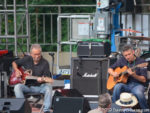
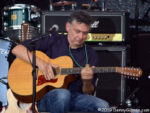 Although Jeffrey Seeman did not perform at the Ludlow Garage, his musical career is inextricably tied to the venue. Seeman was one of the neighborhood teenagers who helped create the place during the summer of 1969 and who worked there after it opened. Much about the experience made long-lasting impressions but none like being the only person to witness the Allman Brothers rehearsal on the eve of their first Ludlow Garage appearance. The teenager was already playing guitar but watching Duane Allman’s slide work inspired Seeman to master the technique which he has done incredibly well. Today he performed on both acoustic and electric and had Skip Cason join on guitar and vocal for one song.
Although Jeffrey Seeman did not perform at the Ludlow Garage, his musical career is inextricably tied to the venue. Seeman was one of the neighborhood teenagers who helped create the place during the summer of 1969 and who worked there after it opened. Much about the experience made long-lasting impressions but none like being the only person to witness the Allman Brothers rehearsal on the eve of their first Ludlow Garage appearance. The teenager was already playing guitar but watching Duane Allman’s slide work inspired Seeman to master the technique which he has done incredibly well. Today he performed on both acoustic and electric and had Skip Cason join on guitar and vocal for one song.
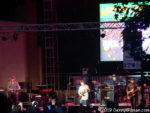
 I’d been there when the music started at noon and sort of surprised myself by still being there when headliner Rick Derringer took the stage more than eight hours later. Rick played the Ludlow Garage in 1970 as a member of Johnny Winters’ band. I stayed for a few songs, including Hang on Sloopy, before starting the climb to my car. I saw Rick most recently back in his hometown when Sloopy was turning 50. The band had been a trio then but now contained a keyboard player whose gear included a keytar. I was parked in the Art Museum lot which isn’t all that far from the concert pavilion but the museum completely blocked the music. Only when I pulled out and cleared the building could I hear what was being played. I exited Eden Park to the sound of Frankenstein as a keytarist presumedly did his best Edgar Winter. Maybe I should have stayed for that.
I’d been there when the music started at noon and sort of surprised myself by still being there when headliner Rick Derringer took the stage more than eight hours later. Rick played the Ludlow Garage in 1970 as a member of Johnny Winters’ band. I stayed for a few songs, including Hang on Sloopy, before starting the climb to my car. I saw Rick most recently back in his hometown when Sloopy was turning 50. The band had been a trio then but now contained a keyboard player whose gear included a keytar. I was parked in the Art Museum lot which isn’t all that far from the concert pavilion but the museum completely blocked the music. Only when I pulled out and cleared the building could I hear what was being played. I exited Eden Park to the sound of Frankenstein as a keytarist presumedly did his best Edgar Winter. Maybe I should have stayed for that.

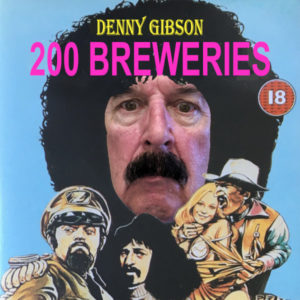



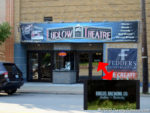
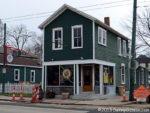
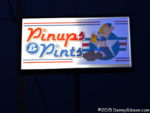
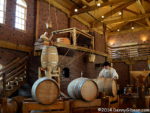
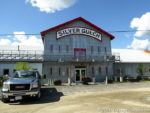
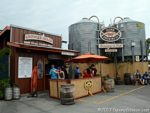
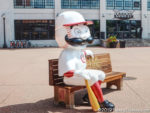

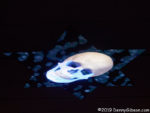
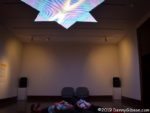
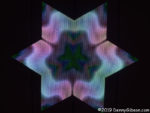
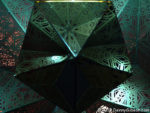
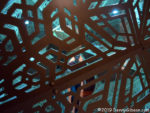
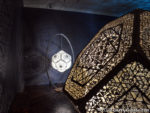
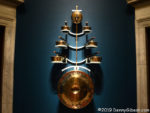
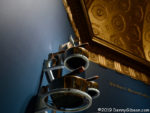
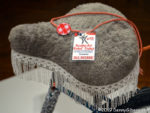
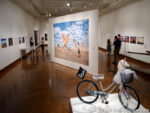
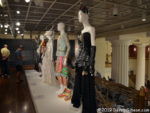

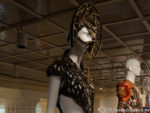
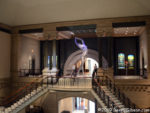
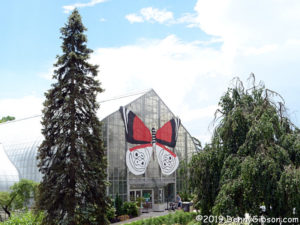


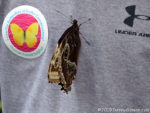
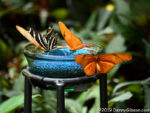
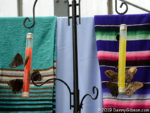
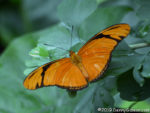
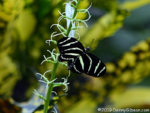
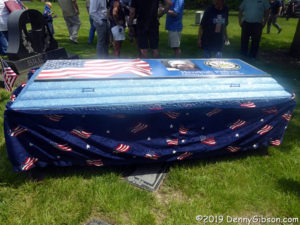
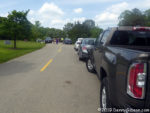
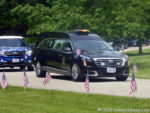



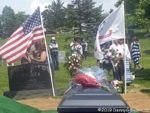


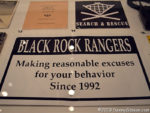
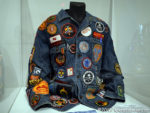
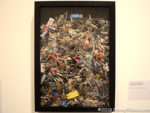
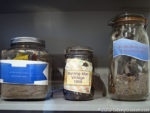


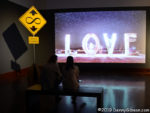

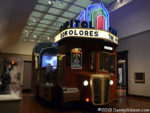
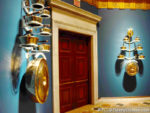
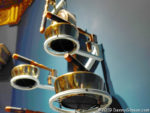
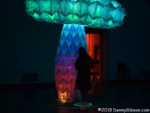
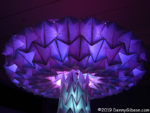
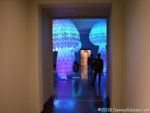
 I’m embarrassed, angry, and disappointed. I missed the 2019 Findlay Market Opening Day Parade. I was close but no cigar. More accurately, no parking place. I left home slightly before 10:00. Traffic was a little heavy on the expressway but not really an issue. I was where I wanted to be around 10:30. It’s a spot a few blocks from the parade start point where I intended to grab a breakfast sandwich before walking to and strolling around the parade staging area.
I’m embarrassed, angry, and disappointed. I missed the 2019 Findlay Market Opening Day Parade. I was close but no cigar. More accurately, no parking place. I left home slightly before 10:00. Traffic was a little heavy on the expressway but not really an issue. I was where I wanted to be around 10:30. It’s a spot a few blocks from the parade start point where I intended to grab a breakfast sandwich before walking to and strolling around the parade staging area.